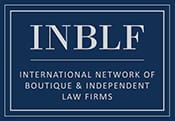How packaging leaves its mark
Eric F. Greenberg Attorney-at-Law
October, 2017
It’s well known that the most valuable things in life are not tangible. The abiding comfort of true love, the bracing rush of a crisp autumn morning, and the pecuniary value of proprietary interests in intellectual property. Sigh. Makes you warm all over just to think about ’em.
Packagers know all this. Packagers know that sometimes their company’s trademarks, trade dress, patents, or copyrights are its most valuable property, more than its machinery or buildings. That’s because the various forms of intellectual property provide some level of exclusivity to your company, and therefore the legal right to use them or license them, and to keep others from using them without your permission. They also know that active protection of items of intellectual property is an essential part of smart ownership.
And packaging professionals know that packaging design and structure are often integral to a product’s concept, marketing, and success, and they employ a variety of techniques to make their package’s appearance unique or distinguishable from competitors.
Today let’s talk especially about trademarks. If the gist of a patent is legal protection for an invention, the gist of a copyright is protection for original creative works, and the gist of trade dress is protection for the overall shape and look of a product or package, then the gist of trademark is protection for a word, phrase, symbol, shape, or other feature that’s associated with your specific company’s product.
It follows then that trademark “infringement,” or violation, occurs when someone other than you uses that trademark, or a trademark that’s so darn-near-close-to-it as to confuse consumers about who is the source of the product. Passing off your product as being from some other company is the central no-no of trademark law.
Companies can register their trademarks with the federal or even state governments as a way of getting dibs on using that particular trademark for their particular type of product. And once their trademark is registered, they can sniff around for competitors who try to use it or anything close to it to sell their competing products, and sue them for infringement when they think they have transgressed.
Packagers’ ears perked up recently when the feds who register trademarks, the Trademark Trial and Appeal Board, issued a ruling saying that Cheerios cereal could not claim as a trademark the yellow color of its cereal boxes. Upon request, the TTAB takes a second peek at trademark applications that have been rejected by a trademark examiner, for example if the applied-for mark is too similar to someone else mark.
General Mills wanted to register as a trademark not the box’s shape, not the product’s name, just the distinctive yellow color of the cereal box. They wanted to have legal protection so that they would be the only company that could use that yellow for boxes of cereal of that type.
Interested as we were in a government trademark ruling that was about packaging specifically, we turned to someone with expertise in the field of trademarks. Attorney Randy Micheletti solves intellectual property challenges for emerging and established companies through his firm, Incubate IP (www.IncubateIP.com), based in Chicago.
I asked him if the TTAB decision was unusual or surprising.
“The Cheerios decision was surprising for a number of reasons,” he answered. “First, the US Trademark Office has granted trademarks on colors for decades, the most famous probably being the pink color of Owens Corning fiberglass insulation in the 1980s. John Deere owns its ubiquitous green and yellow color combination scheme as a trademark, and UPS holds a registered trademark for its brown color too.
“More recently, T-Mobile was granted a federal trademark for the magenta color prominently featured in its advertising campaigns. Unlike in those situations, however, the appeal panel here noted that many other cereal makers have used yellow boxes.”
He says the market is “crowded with big name brands, cheaper brand alternatives, and generic competitors all using brightly colored, sometimes yellow, packaging schemes,” and that led the panel to conclude it’s not likely that cereal consumers “identify a yellow box only with the Cheerios brand.”
But Micheletti picked out a surprising, possibly persuasive reason for the TTAB’s decision:
“The panel’s ruling essentially boils down to a missing ‘(s)’ in an online survey Cheerios conducted. To prove that consumers ‘think Cheerios’ when they see a yellow cereal box, Cheerios conducted an online survey featuring a blank yellow box followed by the question ‘If you think you know, what brand of cereal comes in this box?’ The trademark examiner and the appeal panel both disregarded Cheerios’ data because the word ‘brand’ in the polling question improperly implied that one cereal box color must be connected to exactly one cereal brand. In other words, Cheerios’ survey question assumed the very one-to-one relationship between packaging theme and product manufacturer that they were trying to prove through the survey. Rephrasing the survey question using the word ‘brand(s)’ instead may very well have changed the outcome of the panel’s decision,” he theorizes.
While we’ve got him, let’s ask Micheletti if he’s got any general advice about trademarks or trade dress that virtually all packagers would benefit from. As it happens, he does:
“Choose a packaging theme that is noticeably different from your competitors’ packaging,” he advises. “The more divorced the packaging shape and color and text is from the product itself, the better. Remember that the trademark or trade dress protection requires creating a single association in consumers’ minds between the product and its manufacturer. Packaging that is unusual or distinctive is much more likely to accomplish this than, for example, a simple yellow box in a sea of competitors’ yellow boxes.”
Let’s add “good advice” to our list of valuable intangibles. PW
Eric Greenberg can be reached at [email protected], or visit his firm’s Web site at www.ericfgreenbergpc.com.
This article is informational only and is not intended as, and should not be considered to be, legal advice.
Be sure to check for any updated information about the topics discussed in this article.


